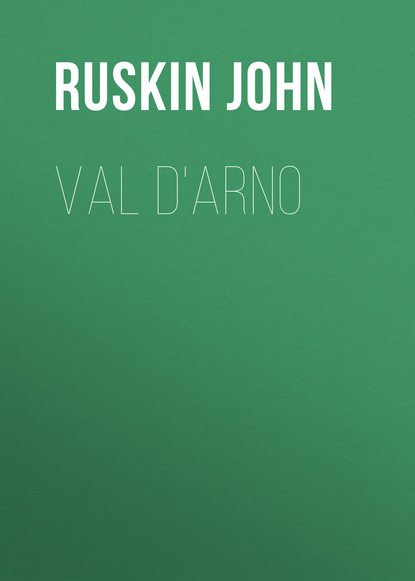По всем вопросам обращайтесь на: info@litportal.ru
(©) 2003-2024.
✖
Val d'Arno
Автор
Год написания книги
2018
Настройки чтения
Размер шрифта
Высота строк
Поля
In connection with the Pisans' insulting intention by their term of Arabs, remember that the Venetian 'zecca,' (mint) came from the Arabic 'sehk,' the steel die used in coinage.
29
Corsona la citta senza contesto niuno."—Villani.
30
Some account of the state of modern British business in this kind will be given, I hope, in some number of "Fors Clavigera" for this year, 1874.
31
At least, the compound 'Mangia-pane,' 'munch-bread,' stands still for a good-for-nothing fellow.
32
Plate 5 is from the photograph itself; the enlarged drawing showed the arrangement of parts more clearly, but necessarily omitted detail which it is better here to retain.
33
Plates 6 and 7 give, in greater clearness, the sculpture of this lintel, for notes on which see Appendix.
34
This passage cannot but seem to the reader loose and fantastic. I have elaborate notes, and many an unwritten thought, on these matters, but no time or strength to develop them. The passage is not fantastic, but the rapid index of what I know to be true in all the named particulars. But compare, for mere rough illustration of what I mean, the moral ideas relating to the stone of Jacob's pillow, or the tradition of it, with those to which French Flamboyant Gothic owes its character.
35
There are at least four definite cleavages at Coniston, besides joints. One of these cleavages furnishes the Coniston slate of commerce; another forms the ranges of Wetherlam and Yewdale crag; a third cuts these ranges to pieces, striking from north-west to south-east; and a fourth into other pieces, from north-east to south-west.
36
I am ashamed to italicize so many words; but these passages, written for oral delivery, can only be understood if read with oral emphasis. This is the first aeries of lectures which I have printed as they were to be spoken; and it is a great mistake.
37
"Pietre conce." The portion of the has-reliefs of Orvieto, given in the opposite plate, will show the importance of the jointing. Observe the way in which the piece of stone with the three principal figures is dovetailed above the extended band, and again in the rise above the joint of the next stone on the right, the sculpture of the wings being carried across the junction. I have chosen this piece on purpose, because the loss of the broken fragment, probably broken by violence, and the only serious injury which the sculptures have received, serves to show the perfection of the uninjured surface, as compared with northern sculpture of the same date. I have thought it well to show at the same time the modern German engraving of the subject, respecting which see Appendix.
38
Perhaps I am thinking of Lowell, not Tennyson; I have not time to look.
39
"Normandie, la franche." "France, la solue;" (chanson de Roland). One of my good pupils referred me to this ancient and glorious French song.
40
Historical antiquary; not art-antiquary I must limitedly say, however. He has made a grotesque mess of his account of the Ducal Palace of Venice, through his ignorance of the technical characters of sculpture.
41
'The Deserted Village,' line 251 to 302.
42
Xem. Conviv., ii.
43
In the catalogues of the collection of drawings in this room, and in my "Queen of the Air" you will find all that I would ask you to notice about the various names and kinds of the flower, and their symbolic use.—Note only, with respect to our present purpose, that while the true white lily is placed in the hands of the Angel of the Annunciation even by Florentine artists, in their general design, the fleur-de-lys is given to him by Giovaiini Pisano on the façade of Orvieto; and that the flower in the crown-circlets of European kings answers, as I stated to you in my lecture on the Corona, to the Narcissus fillet of early Greece; the crown of abundance and rejoicing.
44
I found all this in M. Didron's Iconographie, above quoted; I had never noticed the difference between the two figures myself.
45
The seven higher arts were, Lawyers, Physicians, Bankers, Merchants of Foreign Goods, Wool Manufacturers, Silk Manufacturers, Furriers. The five lower arts were, Retail Sellers of Cloth, Butchers, Shoemakers, Masons and Carpenters, Smiths.
46
Henry's "History of England," book iv., chap. i.
47
In the contemporary south door of the Duomo of Genoa, the Greek moulding is used without any such transformation.
48
The drawings are by some Italian draughtsman, whose name it is no business of mine to notice.











